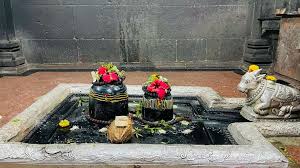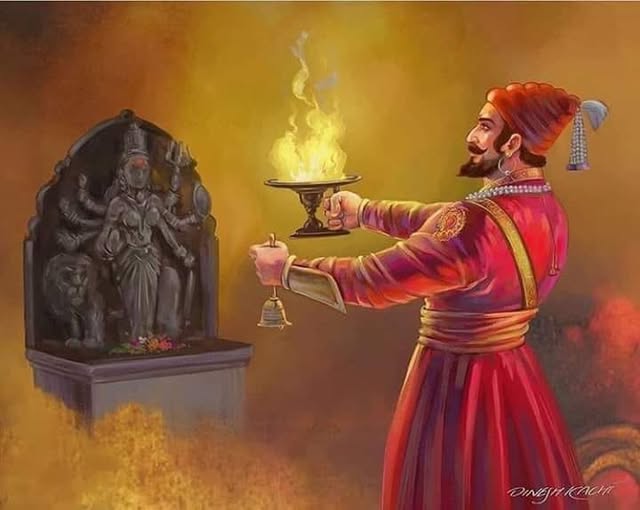Valiant Maratha ruler Chhatrapati Shivaji Maharaj was not only a brilliant warrior and strategist but also a devout Hindu who made significant contribution to the preservation and development of Hindu temples. During his reign, many temples located in present day Maharashtra were restored, patronised and protected.
The founder of the Maratha Empire was primarily a worshipper of Goddess Bhavani, an avatar of Goddess Parvati. He was a devout follower and often sought her blessings before battles, believing she granted him strength and victory.
Some of the most notable temples associated with Shivaji Maharaj’s restoration efforts include:
Bhimashankar Temple
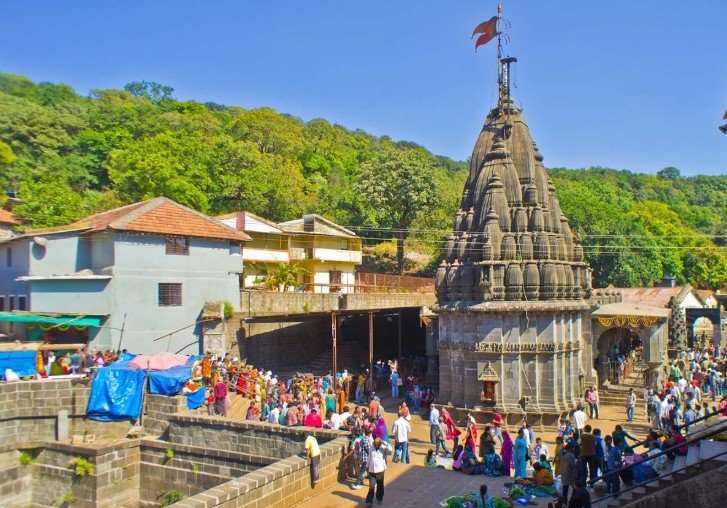
Located in Maharashtra’s Pune District, Bhimashankar Temple is one of the most revered Hindu pilgrimage sites where Lord Shiva (one of the twelve Jyotirlingas) is worshipped. The Bhimashankar Temple is over 800 years old, with its origins tracing back to the 13th century. While the exact date of its initial construction is unclear, the main temple structure is believed to be around that age. Various additions and renovations have occurred over the centuries, particularly during the Maratha period.
It is said that Shivaji Maharaj took a personal interest to preserve the Bhimashankar Temple, which was an important religious site during his reign. His administration provided resources to maintain the temple, allowing devotees to continue worship without the fear of foreign oppression.
Tulja Bhavani Temple
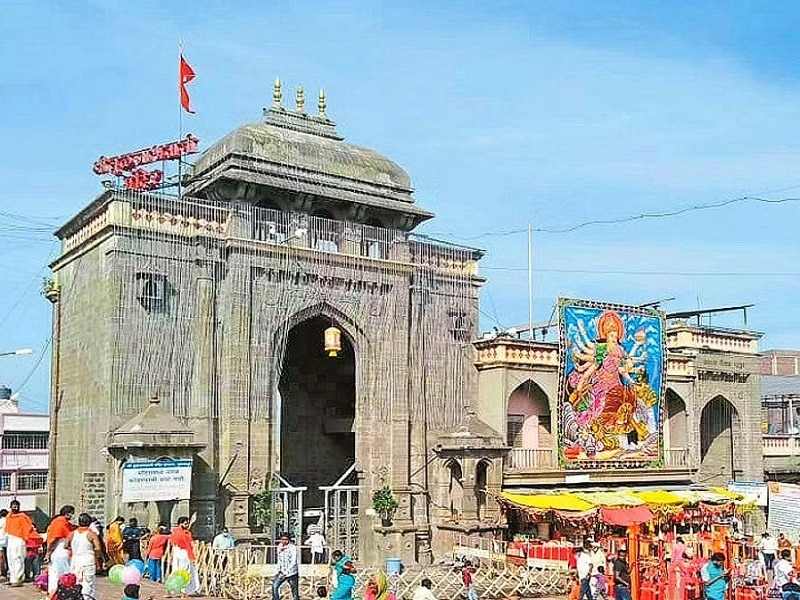
The Tulja Bhavani Temple in Tuljapur, Osmanabad district of Maharashtra and is situated on the banks of the Mandakini River and Bori Dam on Yamunachala Hill. The Tulja Bhavani Mandir was built in the 12th century CE. It is a Hindu temple dedicated to the goddess Bhavani, and is considered one of the 51 Shakti Peethas.
The temple is believed to have been built by Maratha Mahamandaleshwara Māradadeva of the Kadamb dynasty. It holds significant religious importance, particularly for the Maratha community, and is known as the family deity of the Bhosale Royal family and many others. Chhatrapati Shivaji Maharaj, the founder of the Maratha kingdom, frequently visited the temple to seek the goddess’s blessings. A legend says that the goddess gave him a sword, the “Bhawani Talwar”, to help him in his expeditions.
Chhatrapati Shivaji Maharaj ensured that the temple was not only restored but also patronized it with regular offerings, donations, and land grants for its upkeep.
Vitthal Rukmini Temple
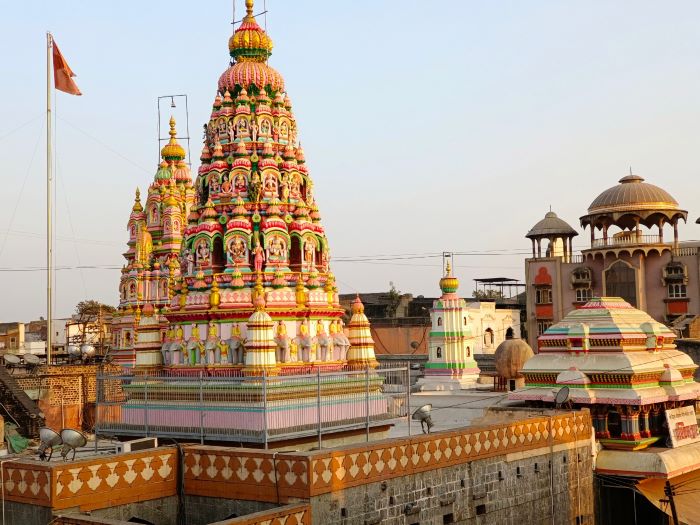
The Shri Vitthal Rukmini Mandir, also known as the Vithoba Temple, in Pandharpur, is a temple with a rich history spanning centuries. While its origins are debated, it’s believed to have been first established between 1108 and 1152 CE by King Vishnuvardhana of the Hoysala Empire. An inscription from 1237 CE mentions a Hoysala King Vira Someshwara granting a village for the temple’s upkeep. The temple has undergone extensive renovations and expansions over time, including a major construction in the 13th century in the Hemadpanti style, and later additions in the Deccan style.
Pandharpur is one of the most significant pilgrimage sites in Maharashtra. Chhatrapati Shivaji Maharaj protected this holy site and ensured that devotees could visit the temple without any fear. His support helped maintain its importance as a spiritual centre.
Grishneshwar Temple
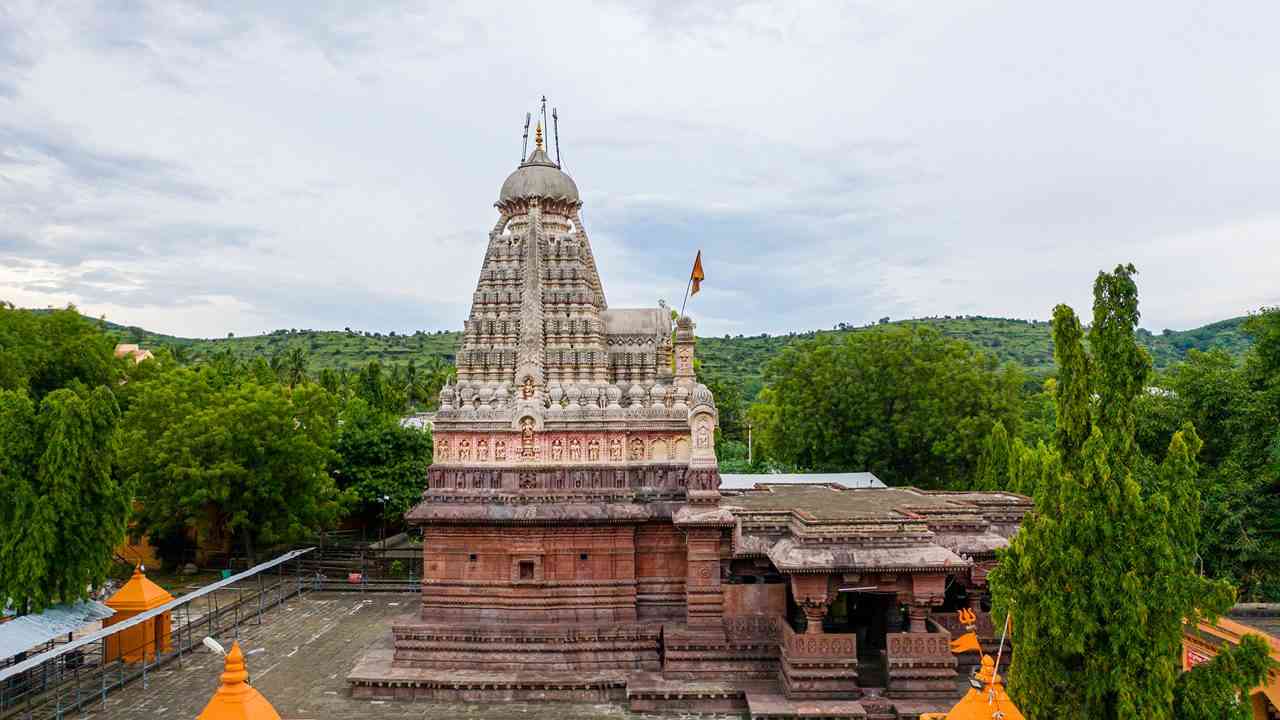
A major Hindu pilgrimage site, the Grishneshwar Temple, also known as Ghushmeshwar, is believed to be at least 1300 years old. While the current structure was rebuilt in the 18th century, the temple’s origins are linked to the 6th century and the Rashtrakuta dynasty. It’s one of the 12 Jyotirlinga temples of Lord Shiva.
Located in Ellora, Aurangabad District of Maharashtra, the Grishneshwar Temple had suffered damage due to invasions. Chhatrapati Shivaji Maharaj’s efforts in reviving the temple and restoring its prominence are well-recognized. He funded the reconstruction of the temple, thus making it regain its status as a major pilgrimage site. Earlier, his grandfather Maloji Bhosale had rebuilt it in the 16th century.
The current structure of Grishneshwar Temple was rebuilt by Rani Ahilyabai Holkar of Indore in the 18th century after the fall of the Mughal Empire.
Jagdishwar Temple (Raigad Fort)
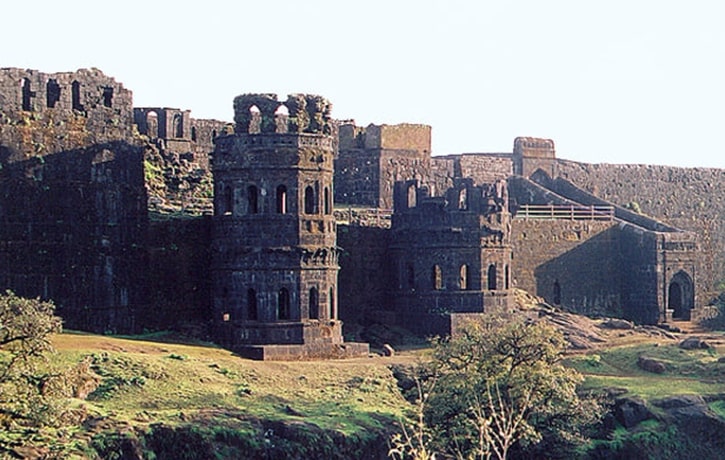
The Jagdishwar temple also known as Jagdamba Temple on Raigad Fort is approximately 350 years old, having been built around 1674 AD. It was constructed during the reign of Chhatrapati Shivaji Maharaj, when Raigad Fort served as the capital of the Maratha Empire. The temple is known for its historical significance and architectural design, made of stone.
The 350-year-old Jagdishwar temple atop Raigad fort holds much significance in the state’s rich heritage. Built inside Raigad Fort, the capital of Shivaji’s kingdom, this temple symbolised the Maratha ruler’s devotion to the mother goddess, and it was one of the key spiritual centres within the fort. It is said Chhatrapati Shivaji Maharaj often visited this temple for blessings and guidance before his military campaigns.
Rameshwar Temple (Raigad Fort)
The Rameshwar Temple in Pen, Raigad, was built in 1758 CE. It features deities Rameshwar (Shiva), Durga, and Ram, Lakshman, Sita, and Hanuman. The temple is characterised by two garbhagrihas (inner sanctums) and two shikharas (tower-like structures). One garbhagriha houses the idol of Goddess Durga, while the other, located to the right, houses the idol of Lord Rameshwar.
This temple was located within the Raigad Fort, Shivaji’s capital, and dedicated to Lord Shiva. Chhatrapati Shivaji Maharaj paid special attention to this temple’s upkeep, as it held significant religious importance to him. It served as a spiritual centre within the fort and is still visited by devotees today.
Shivneri Fort Temple
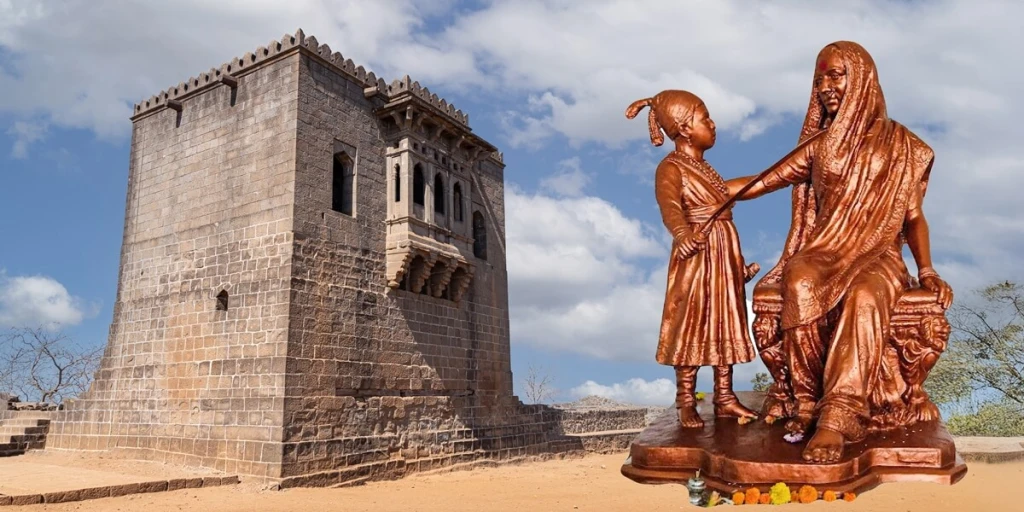
The Shivneri Fort temple, located in Maharashtra’s Pune District, is dedicated to Goddess Shivai Devi. It is part of a fort complex that has a history dating back to the 1st century CE. The fort itself was built earlier, with evidence suggesting its construction began in the 1st century CE, and it was later used as a strategic military outpost. The temple, named after the goddess who is believed to have protected Shivaji Maharaj, is an integral part of the fort’s history and significance.
Chhatrapati Shivaji Maharaj was born at Shivneri Fort, and the temple dedicated to Goddess Shivai, after whom he was named, was of great personal importance to him. Shivaji showed immense devotion to this goddess, and during his reign, he made sure that the temple received patronage and protection.
Shambhu Mahadev Temple
